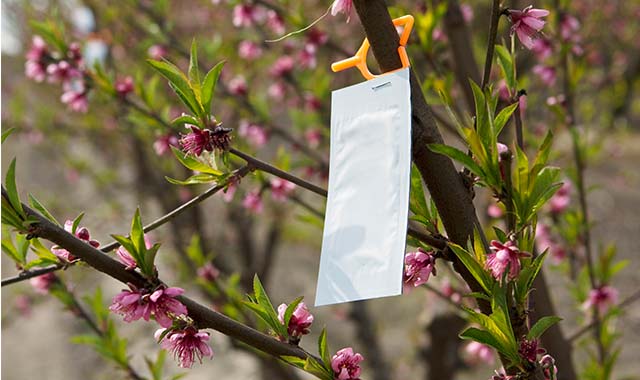Three Ways Encapsulation is Changing Agriculture

How can encapsulation technology make agriculture more productive and sustainable?
Encapsulation is the process of enclosing tiny particles of a substance inside another material (usually a polymer). Encapsulated particles are designed to release their contents when exposed to a particular trigger.
1. Controlled Release of Crop Protection Products
Encapsulating pesticides, fertilizers and other agrichemicals allows growers to precisely control the conditions under which the active ingredient is released. For example, a pesticide product may be most effective at certain humidity or pH levels, or need to be targeted to the leaves or the roots of the plant.
Sophisticated encapsulation technologies can be designed with appropriate triggers for maximum efficacy. A pesticide that works on the leaves of the plant, for example, may be triggered by UV exposure. Another agrichemical that needs to be applied to the roots in wet conditions may only be released when rain washes it down into the soil.
With encapsulation, growers don’t need to wait for perfect conditions to lay down the product. They can apply it when convenient, knowing that the active product will be released when conditions are right. Agrichemical companies can even create dual-action products with multiple triggers, allowing growers to combine formerly incompatible ingredients into a single application, saving time and money.
2. Reduced Environmental Impact
Encapsulation can also help minimize the use of pesticides and reduce their environmental impact. Because product is protected until conditions are right for release, growers don’t have to apply as much or as often.
Encapsulation can also reduce leeching. This reduces environmental impact on groundwater and surface water, and ensures that the product stays in the field where it is needed.
Future products may use encapsulation to protect the environment in other ways as well. For example, a controlled release formula for phosphorus, a common fertilizer, could reduce the chances that extra phosphorus would wash into streams and lakes. You could even design a capsule that controls both absorption and release of phosphorous under different conditions, so it would absorb excess phosphorus in the soil and re-release it when it is needed.

3. Increased Stability for Biopesticides
Biopesticides use living microbes or naturally-derived bioactive compounds, such as enzymes or pheromones, to protect agricultural crops from destructive pests. These biological pest control products are highly targeted to specific pests and are generally considered to be less toxic and more environmentally friendly than conventional broad-spectrum agrichemicals.
However, living organisms and bioactive compounds aren’t as hardy and shelf stable as their synthetic alternatives. They tend to degrade rapidly in sunlight and have limited storage lives. They also have to be delivered at the right time and place according to the target pest’s lifecycle.
Encapsulation can help to increase the shelf stability of bioactive compounds and living organisms such as bacterial spores. Encapsulation can also help to ensure perfectly timed delivery for biopesticides, widening the window in which they can be applied in the field. For example, bacterial spores could be encapsulated using a polymer that will break open when temperatures reach a certain level, ensuring that the spores will activate at the right time to combat pests as they emerge.
Learn more about Battelle's work in Encapsulation.

Related Blogs
BATTELLE UPDATES
Receive updates from Battelle for an all-access pass to the incredible work of Battelle researchers.







